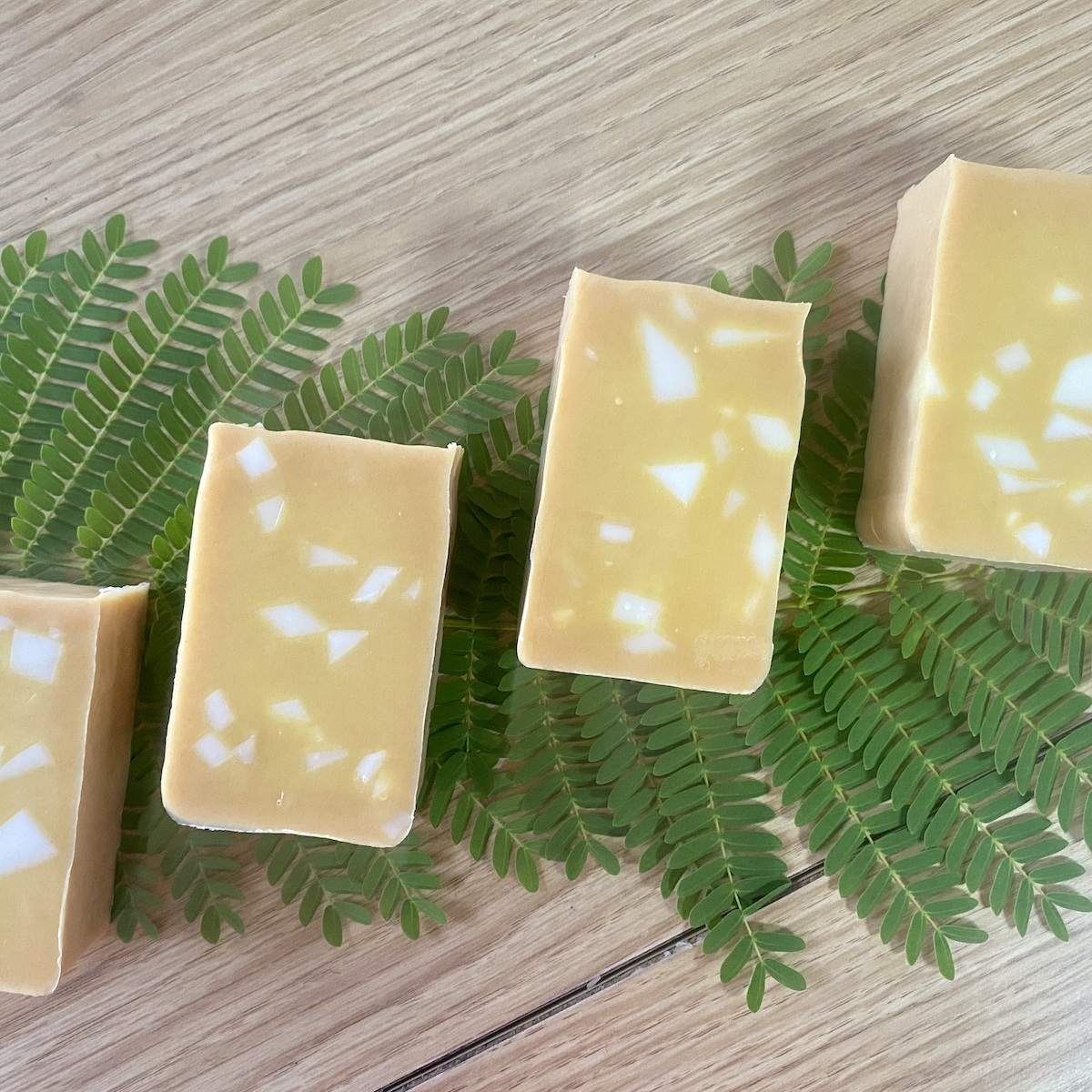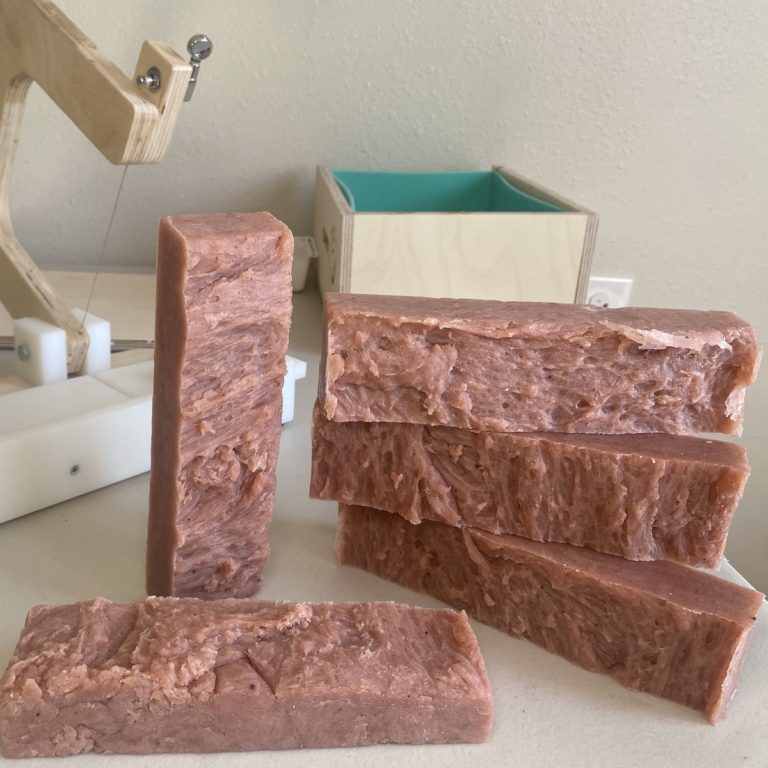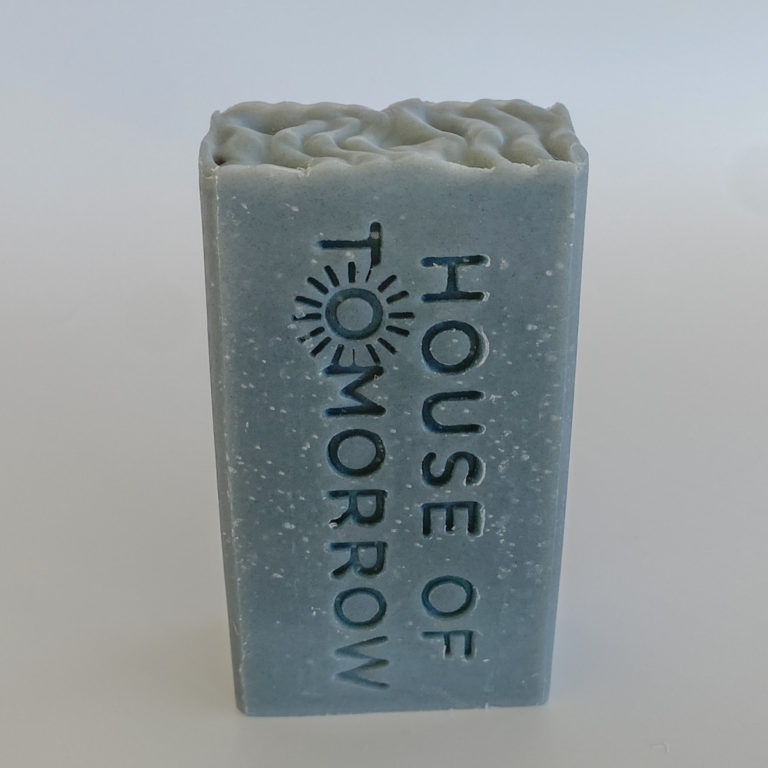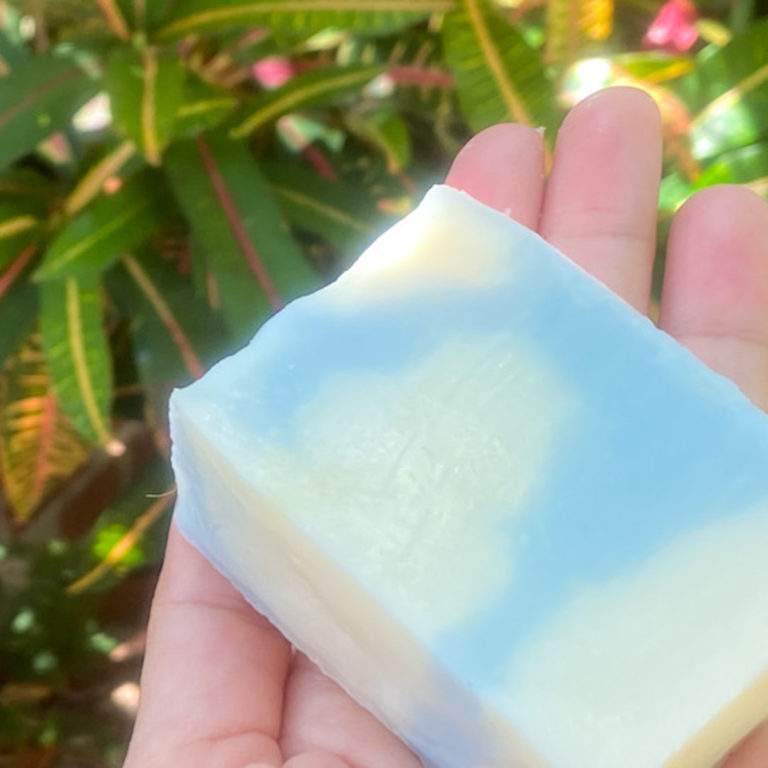How to Color Soap With Natural Ingredients

Learning how to color soap with natural ingredients is a process that requires hands-on experimentation, and that means you’re about to have a lot of soap making fun. You’re also about to do a lot of research. I personally prioritize coloring products I make with either nothing at all or natural ingredients. Naturally this sets some pretty big limitations on the looks I’m able to achieve, and results in many surprises since plant products often react to the lye used in the soap batter in unexpected ways.
Still, one of the things I love about soap is how we can incorporate amazing ingredients into our formulas, and goodies from nature that impart so much extra beauty, like herbs, flowers, and roots. And it’s worth the effort of learning how to work with natural ingredients to achieve a certain vibe or style for your soap. Feels a little like cracking a code or solving a mystery.
Let’s start with some big picture stuff.
Natural ingredients that you use to color soap should either be added (method 1) upon achieving trace as you’re making soap (method 2) to your lye solution at the beginning of your soap making process (method 3) as an oil infusion, which often takes place weeks prior to making soap.
Numbers 1-3 above are listed in order of easiest to most pain in the ass. The ingredients you choose to color your soap will sometimes affect which of the above 3 options you choose. Another thing that affects which option you go with is your desired intensity and look of your final product.
Let’s go over how to color soap with natural ingredients, by diving into the details about how you might handle each ingredient.
Alkanet Root
- purplish brownish tones
- add at trace (method 1)
Beet Root
- will first appear to be a nice red color. in reaction to the lye, it will become brown in the final product
- add at trace (method 1)
Calendula
- orange to brown flecks if added at trace (method 1)
- gold-toned if infused in oil (method 3)
Charcoal
- grey to black
- add at trace (method 1)
Clays (check these closely before buying, as some colored clays have mica in them for color)
- varies according to the color of the clay, but will result in a pastel version of the clay you’re buying
- mix with a small amount of water and add at trace
Cocoa Powder
- tan to brown
- add at trace (method 1)
Dill Weed
- muted green flecks
- add at trace (method 1)
Himalayan Rhubarb
- vibrant pink to red
- infuse in a light colored oil for 2-4 weeks (method 3)
Indigo Leaves
- a mix between green and tan
- add at trace (method 1)
Indigo (same as above, but with additional processing via soaking, fermentation, and lime treatment)
- steel gray to denim blue if added at trace (method 1) or infused in lye (method 2)
- baby blue if infused in oil for 5-6 weeks (method 3)
- sometimes even pink if you get lucky and do a weak infusion in oil and DO NOT shake the bottle before measuring out oil (method 3)
Madder Root
- pink
- add at trace (method 1)
- note that adding too much will result in a scratchy (or shall we say exfoliating?) feel to your soap
Neem Powder
- tan to brown
- add at trace (method 1)
Paprika
- orange (grainy appearance)
- add at trace (method 1)
Parsley
- green (but the green fades quicker than most other natural colorants, especially if exposed to the sun)
- add at trace (method 1)
Turmeric

- yellow to orange
- you can use any of the methods 1-3
Woad
- deep blue if you infuse it in your lye solution (method 2)
- light blue with additional darker blue specks if you add it at trace (method 1)
Note that although some may mistakenly call micas natural colorants (even on their packaging and marketing materials), in many cases they are not. Micas (a silicate mineral) can either be naturally mined from rocks and crystals or synthetically created in labs.
In either case, they’re not very colorful (white, silver-toned, or gold-toned) so in its natural form, it usually doesn’t even make sense to use it as a natural colorant. To impart the huge variety of colors you see in micas, dye is applied to them. These dyes are often the ones health-conscious people try to avoid (Yellow 10, Blue 1, Red 28, and so on). Sometimes micas are also colored with ultramarine oxides or iron oxides, which are less concerning colorants that I’ll cover later in this article.
The reason why micas are so popular in bath and body products is because its mostly neutral coloring, with the help of dye, makes it amazingly versatile on the cheap.
If you do use micas, crazy as it may sound, I would actually encourage you to use synthetically created mica over naturally mined mica because mining conditions are extremely dangerous, and children and impoverished people are often the unseen victims of this trade. Synthetically created mica is also a more pure product, which makes it safer for your customers.
Pigments like ultramarines & oxides are another category of colorants to be aware of. They’re nature identical (same molecular structure as the minerals that would have been mined from the earth), so these are not natural colorants. Although I use them sparingly, I do like me some pigments since they’re intensely colored and perfectly safe to use in soap. If you want to experiment with them to supplement your natural colorants, always choose pigments labeled safe for cosmetic use. If safe for cosmetic use, they are always synthetic, as the naturally derived versions can contain impurities and toxic heavy metals.
So back to the topic of learning how to color soap with natural ingredients – how do you use the 3 methods listed?
Method 1 (add at trace)
- you’ll find it easiest to mix colors in nicely if you pre-mix the colorants with a small amount of oil or soap batter, then add that to your larger batch of soap batter. this will help you avoid clumping and streaks of color in your finished soap
Method 2 (infuse in lye)
- this will often result in the most pigmented look
- make your lye solution first, then add your colorant
- i always recommend straining your lye solution when incorporating it into your oils. this is especially important when infusing colors into lye solution
Method 3 (infuse in oil)
- measure your colorant into a light colored oil and cover very tightly
- shake periodically
- strain out before use
No matter which method you choose, its generally the case that putting soap through a gel phase will make the color more vibrant and intense than otherwise.






